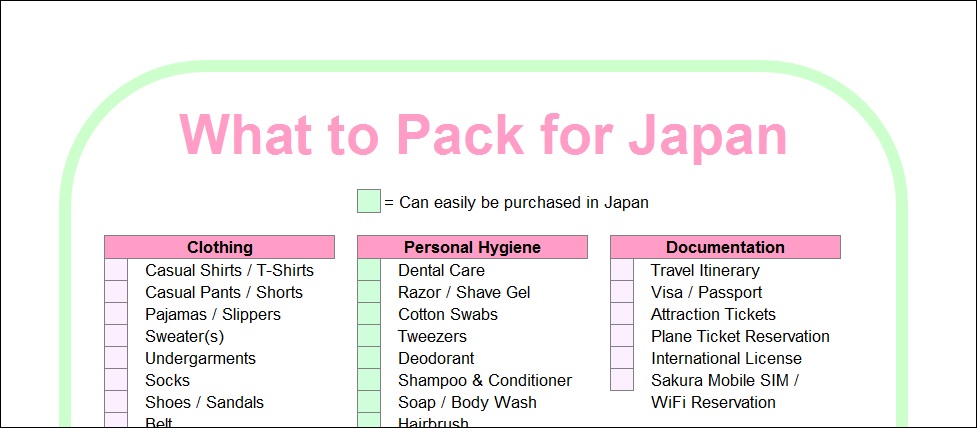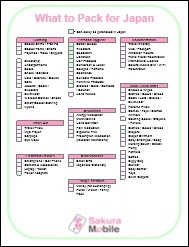Toothbrush. Check. Underwear. Check. Hairdryer…. Wait, would your hairdryer even work in Japan? Packing is, inevitably, the worst part about traveling. Nobody likes to do it, but everybody has to yet we always leave it until the very last minute. There is procrastination and then there is running around trying to locate the “safe place” you hid your passport while the taxi is waiting outside to take you to the airport. If you’re headed to Japan, but are stuck in the packing blues, your life has gotten a little easier with our essential tips on what to pack for Japan and our downloadable Japan packing list.
What to Pack for Japan
Smartphone (Japan Travel SIM Card)
This goes without saying, but if you use a smartphone back home, then definitely bring it with you. While free WiFi is gaining momentum in Japan, there are still many places that don’t have strong signals (if any). To overcome this issue, you can easily rent a travel SIM that works with unlocked phones and have it mailed directly to the airport you’re arriving at or to any address you’re staying at. Note that most companies offering Japan Travel SIM cards have limited quantities in stock, so if you want to get the best deal possible, consider reserving early; otherwise you may pay an arm and a leg for data if you have to purchase the card after you land at the airport.
Comfy Shoes that are easy to take off
Whether you’re traveling to bustling Tokyo, spirited Kyoto, or somewhere scenic in rural Japan, you’re always going to want to have comfortable shoes to walk in. And, in addition to comfort, make sure they’re also easy to take off. There are so many tourist spots in Japan, like temples, restaurants and ryokans (Japanese inns) that require you to take your shoes off before entering, so you will definitely save yourself from a backache by not having to unzip, untie or unbuckle during your trip. 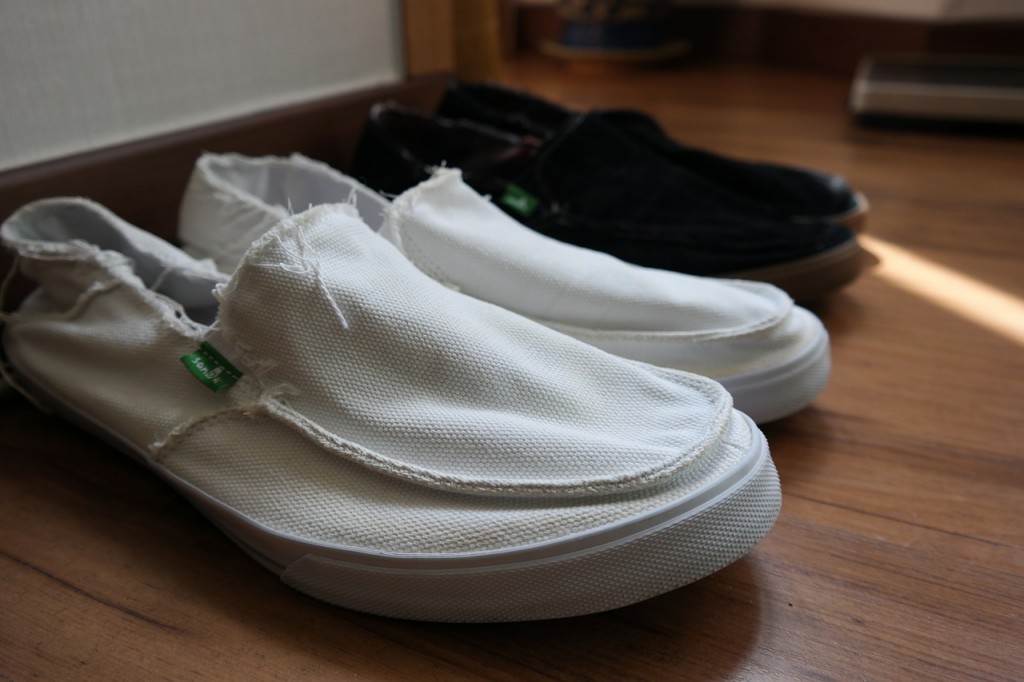 If you’re planning on buying shoes in Japan, here’s something you should know: most stores will only have sizes up to 25 cm (US 9) for women, and 28 cm (US 10) for men.
If you’re planning on buying shoes in Japan, here’s something you should know: most stores will only have sizes up to 25 cm (US 9) for women, and 28 cm (US 10) for men.
Power Converter or Adapter (JIS C 8303 / NEMA 1-15)
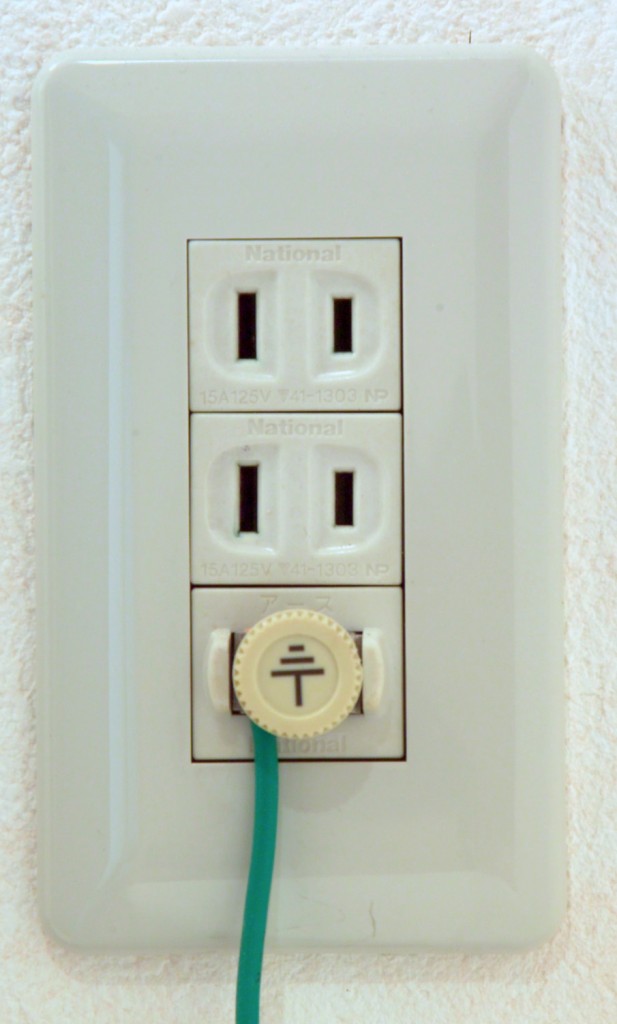 The voltage in Japan is 100 volts. So, if you’re coming from North America, you may be able to use your appliances, albeit at a lower voltage. If you’re coming from Western/Central Europe or other regions of the world where the voltage is 230 volts, you’re most likely going to need a converter. In addition, the power outlets in Japan are mostly 2-pinned polarized outlets, where one slot is slightly wider than the other. (In rural areas, older buildings and multi-plug adaptors, you may still find unpolarized outlets.) So, if you’re planning on bringing any 3-pinned appliances, make sure to pack an adaptor as well.
The voltage in Japan is 100 volts. So, if you’re coming from North America, you may be able to use your appliances, albeit at a lower voltage. If you’re coming from Western/Central Europe or other regions of the world where the voltage is 230 volts, you’re most likely going to need a converter. In addition, the power outlets in Japan are mostly 2-pinned polarized outlets, where one slot is slightly wider than the other. (In rural areas, older buildings and multi-plug adaptors, you may still find unpolarized outlets.) So, if you’re planning on bringing any 3-pinned appliances, make sure to pack an adaptor as well.
Medication
 If you’re taking any prescription drugs, make sure to bring them along. It’s not that they’re not available in Japan, but unless you have health insurance that covers your medical bills in Japan, why go through all the hassle of getting prescription drugs? However, with that being said, be sure to check that you can legally bring your personal medications into Japan as there are some restrictions. You can easily get the Japanese equivalent of antacids, painkillers or cough medicine at one of the many Japanese drugstores–if you know the Japanese word for it (ya-kyo-ku = drugstore; ku-su-ri = medicine). For specific medicine names, you can use your smartphone to translate the word or phrase into Japanese and then show the pharmacist. Note that brand names are different in Japan so asking for Tylenol or Nurofen will often only reward you with a confused stare.
If you’re taking any prescription drugs, make sure to bring them along. It’s not that they’re not available in Japan, but unless you have health insurance that covers your medical bills in Japan, why go through all the hassle of getting prescription drugs? However, with that being said, be sure to check that you can legally bring your personal medications into Japan as there are some restrictions. You can easily get the Japanese equivalent of antacids, painkillers or cough medicine at one of the many Japanese drugstores–if you know the Japanese word for it (ya-kyo-ku = drugstore; ku-su-ri = medicine). For specific medicine names, you can use your smartphone to translate the word or phrase into Japanese and then show the pharmacist. Note that brand names are different in Japan so asking for Tylenol or Nurofen will often only reward you with a confused stare.
Small Luggage
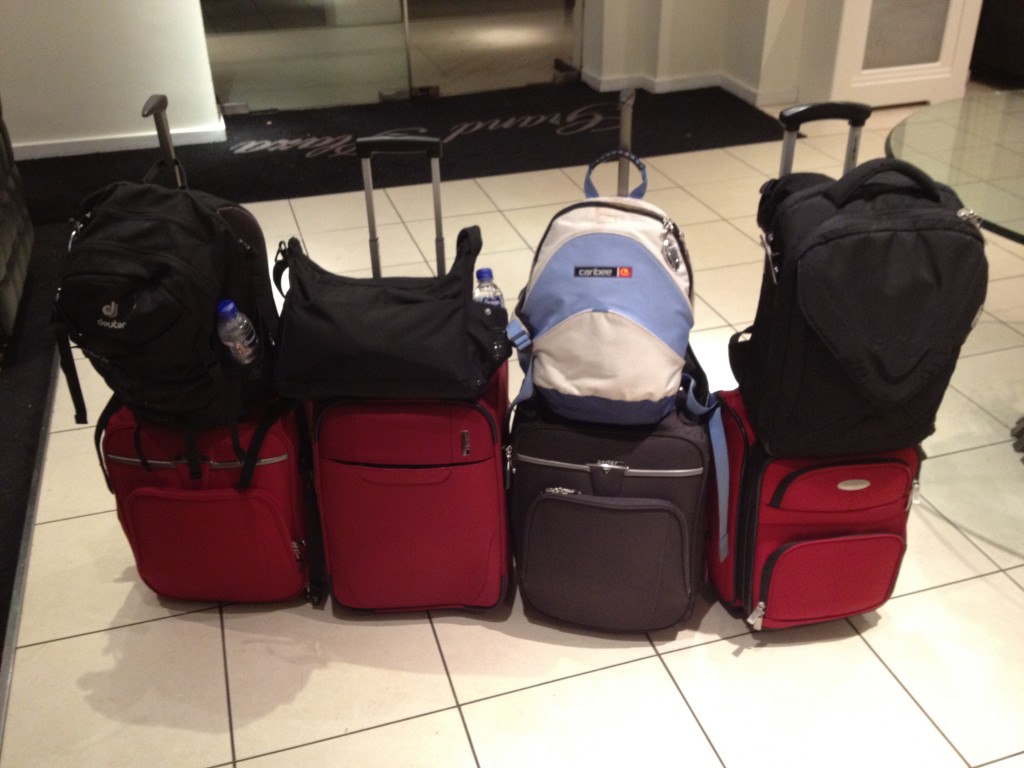 Rather than trying to pack everything into one giant suitcase, try to pack light by using a smaller suitcase or a backpack with wheels. Smaller luggage is better because storage compartments on trains (including regular commuter trains and bullet trains) are very limited–and large suitcases on an insanely crowded train can quickly earn unfriendly glares, especially at peak travel times. You will also start cursing under your breath when you find that many of the train stations lack easy access to escalators or elevators.
Rather than trying to pack everything into one giant suitcase, try to pack light by using a smaller suitcase or a backpack with wheels. Smaller luggage is better because storage compartments on trains (including regular commuter trains and bullet trains) are very limited–and large suitcases on an insanely crowded train can quickly earn unfriendly glares, especially at peak travel times. You will also start cursing under your breath when you find that many of the train stations lack easy access to escalators or elevators.
Hand Towels
 Surrounded by mountains, Tokyo’s weather can be quite unpredictable at times. You’ll get the sudden rain and temperature spikes, especially if you’re traveling during the spring, summer and fall. You’ll be glad you brought a few hand towels or handkerchiefs to wipe off the rain and/or sweat. On top of that, many public bathrooms in Japan don’t have paper towels or hand dryers as it a cultural norm to always carry a towel, so it won’t hurt to have something to dry your hands with–unless you think that’s what your pants are for.
Surrounded by mountains, Tokyo’s weather can be quite unpredictable at times. You’ll get the sudden rain and temperature spikes, especially if you’re traveling during the spring, summer and fall. You’ll be glad you brought a few hand towels or handkerchiefs to wipe off the rain and/or sweat. On top of that, many public bathrooms in Japan don’t have paper towels or hand dryers as it a cultural norm to always carry a towel, so it won’t hurt to have something to dry your hands with–unless you think that’s what your pants are for.
Smart-Casual Clothes
While most restaurants and bars don’t have a dress code, it wouldn’t hurt to have one set of smart-casual attire–especially if you are planning on going to an upscale Japanese restaurant or a fancy hotel bar in, say, posh Ginza or Omotesando.
What Not to Pack for Japan
Shampoo
Ditch the heavy shampoo bottles! For real. They only take up space that you could be using for something else. Besides, have you ever successfully transported a bottle of shampoo without it leaking in your bag? It’s too risky. Instead, just pick up a small bottle at a nearby convenience store or drugstore for a few hundred yen. In most stores, the selection of hair products is quite substantial, and you’ll even find Western brands like Lux and Pantene.
Toiletries
Most hotels, 3-star and above, will provide you with a toothbrush, toothpaste, soap and a razor. If your hotel doesn’t, just swing by a nearby convenience store for whatever it is you need. Get your mouthwash, floss, toothbrush and the whole spiel once you arrive.
Low-Cut Shirts
Casual clothes, like shorts and a t-shirt, are perfect for sightseeing–especially during the muggy summer months. Having said that, try to avoid wearing low-cut shirts that show your assets. While Tokyo is a glitzy and glamourous fashion hub, most people dress on the conservative side. Meaning, low hanging spaghetti straps and short shorts may warrant unwanted attention from locals. Also, for men who enjoy a morning ritual of jogging without the restriction of a sweaty shirt, you may consider leaving your shirt on while in Japan as this is considered very unusal by the locals. If you’re thinking of purchasing some stylish clothes in Japan, here’s what you should know: clothing sizes usually run a little smaller (e.g., an American XS would be a Japanese S, an American S would be a Japanese M, etc.). But don’t worry; if you usually wear a women’s XS?M, you’ll find clothing your size in most stores. If you’re an L–XXL, Uniqlo and Western shops, like GAP or Zara, may be your best options. For men, it won’t be as difficult to purchase clothes that fit, unless you’re 6 feet (approx. 180 cm) or taller.
Seasonal Accessories
Don’t bother bringing your favorite gloves, scarves, and hats, unless you’re planning on going hiking and need to have waterproof ones. Most of these seasonal items can be purchased for cheap at places like Uniqlo or Daiso (the Japanese version of a dollar store, except so much better), and you don’t want to risk losing any of your favorite accessories in a foreign country.
Bottom Line on What to Pack for Japan
Save space in your suitcase for all the amazing souvenirs your going to buy, because you’ll definitely regret packing too much when you don’t have any room left. Some travelers end up buying another suitcase just for all their newly purchased items. While that’s one way to go about it, it’s definitely not the most economically friendly way. Save some cash by taking our advice on what to pack for Japan with our Japan packing list PDF below.

